Why I Am Paying an Exorbitant Sum for Ballroom Dancing
After the writer's wife died, he discovered the music played on
The first time I stepped onto the dance floor after my wife died, I knew I was in trouble. I could see that the woman I was with knew what she was doing, and I don’t mean she could shimmy. She moved her spine like a snake responding to a charmer’s flute. I tried to move with her, but all I could do was flail about.
I’ve always wanted to learn to dance. My late wife and I enjoyed taking a few salsa lessons when we first got married, but they were informal and none of it stuck. We talked about taking ballroom lessons. It was obvious to us that older couples who’d been dancing together for a long time were happier and healthier than the people pounding drinks at the bar. Maybe it was a way to keep the connection alive.
I asked my wife to take lessons, but she was mad at me and refused. Later, she invited me to take lessons, but I was mad at her at the time, so I refused. We were each too proud and too stubborn to try again. The music played on without us.
That changed for me nine months after my wife’s passing, when I went out on my first date and tried to fake a few swing steps. As it turns out, my date had taught ballroom dancing briefly in her 20s. And while she remained mostly a social dancer after that, her training still came through. She thanked me for making the effort; it was obvious that I had no idea what I was doing.
“I’m going to take dance lessons,” I told her.
The First Lesson
My sister-in-law, who’d been a professional dancer in the modern style in New York City before moving to the Twin Cities where I live, told me about a couple of nearby options. I dropped in on Cinema Ballroom & Latin Dance in St. Paul and asked how to get started. They signed me up for a “free” lesson with one of their instructors, Nicole Piechowski.
Nicole is a beautiful, tall woman with a degree in biochemistry from the University of Minnesota. She gave up a job as a malaria researcher two years ago to teach ballroom lessons full-time. She works at it seven days a week and makes every one of her students feel like they belong on the dance floor, rewarding their efforts with a hug or a high five. After a short introductory lesson, she explained some of the dance packages to me.
I have no idea what she said. I just wanted to know where to sign and when I could have another lesson. I had a glimpse of grace, and wanted to embody it.
I’m a bit of a skinflint, and the price I’m paying to learn to move gracefully across a wooden floor continues to blow me away. Between mid-February and the end of July, I’d spend about $2,400 on lessons.
I dropped by the studio to watch its “extravaganza” contest, where the professional instructors danced with their students. I was shocked when they charged me $20 just to watch. I had only one hour free, and I had to tear myself away.
A few weeks later, when Nicole told me that I should participate in the upcoming “Summer Showcase” (a recital rather than a contest), I said sure. With decades of experience in the martial arts behind me, I told her I would just consider it my gokyu test, the first level after white belt in the styles I’ve studied.
An Invitation to Spend
It quickly became apparent that I was in over my head. I could stumble through three dances at that point, and Nicole said she wanted me to perform six in the showcase, just two months away. I announced that I was taking a sabbatical from the martial arts. It would take everything I had over the next two months to prepare.
With about a month to go before the performance, Nicole mentioned that there’d be some fees: $110 registration plus $20 a dance, which for me was $240, because she said I should dance each one twice. Oh, and I probably should consider taking more than my regular two private lessons a week, she said.
I tried to smile, but I’m sure it looked more like a grimace. I’ve been an investigative reporter for many years, specializing in white-collar crime. I began to wonder if I was being had in a new form of Ponzi scheme, where the phantom payoff was not a bankroll, but a perfect rise and fall in the waltz.
One of my new-found friends at the studio told me that he’s paying for his lessons by selling off his collection of muscle cars, which used to be his hobby until he began ballroom dancing.
I grew more nervous. Am I being had? Am I paying a fortune just to capture a semblance of beauty and vitality? I watched Richard Gere and Jennifer Lopez in the movie Shall We Dance and I actually cried. That’s me, I thought: A middle-aged guy whose desperate grasping for the beauty and grace of youth has blinded him to the joys of living in the present moment.
1 of 7
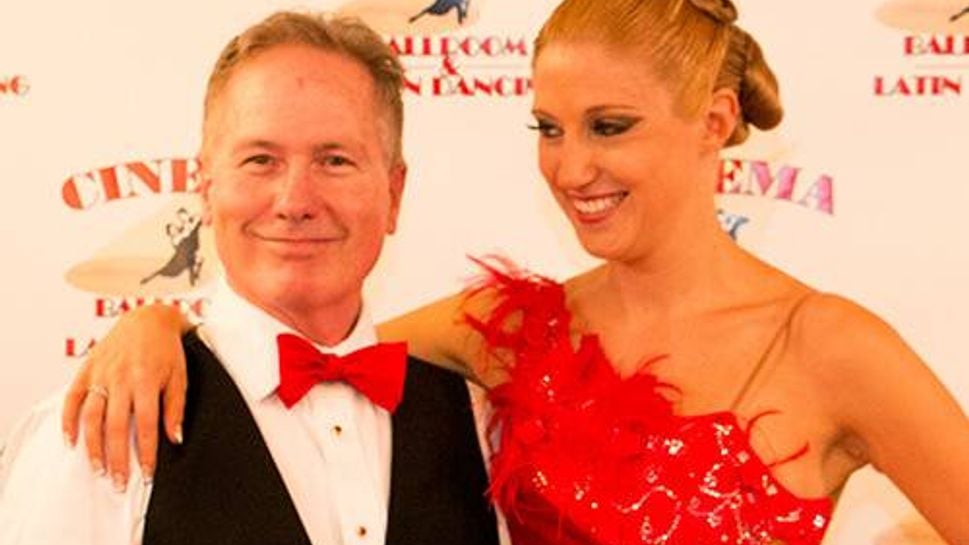
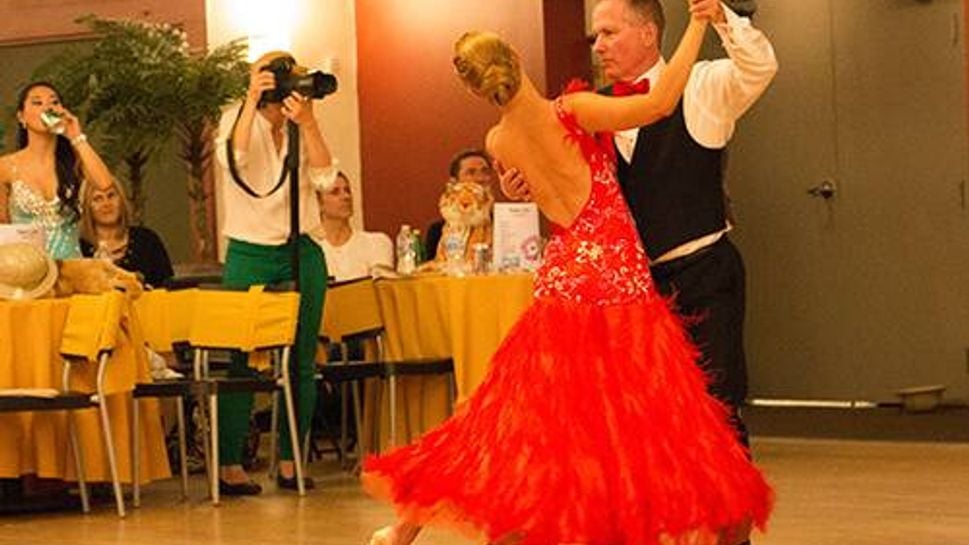

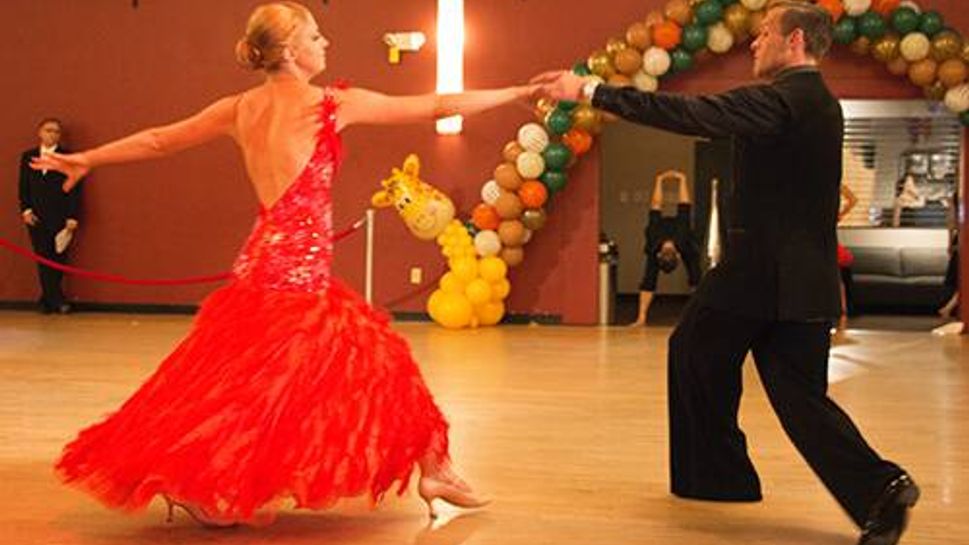
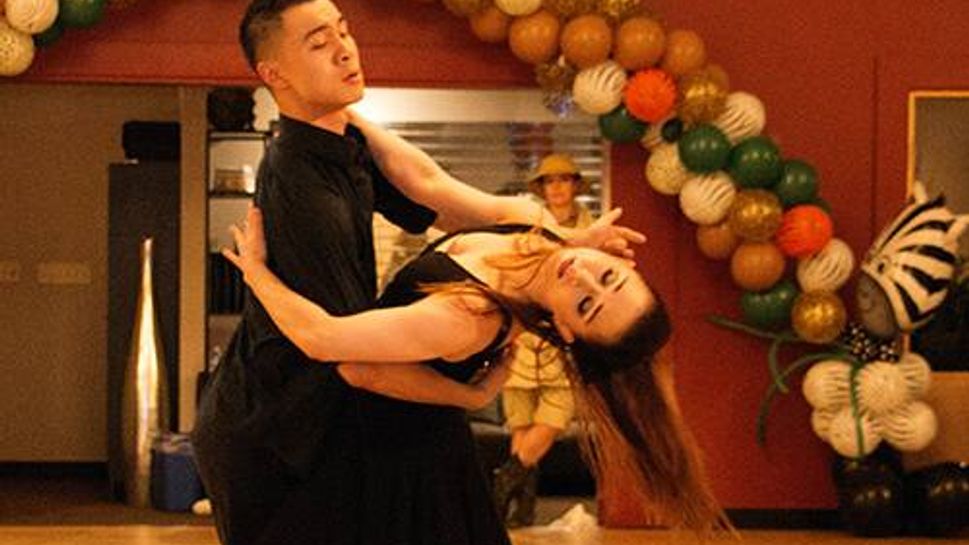
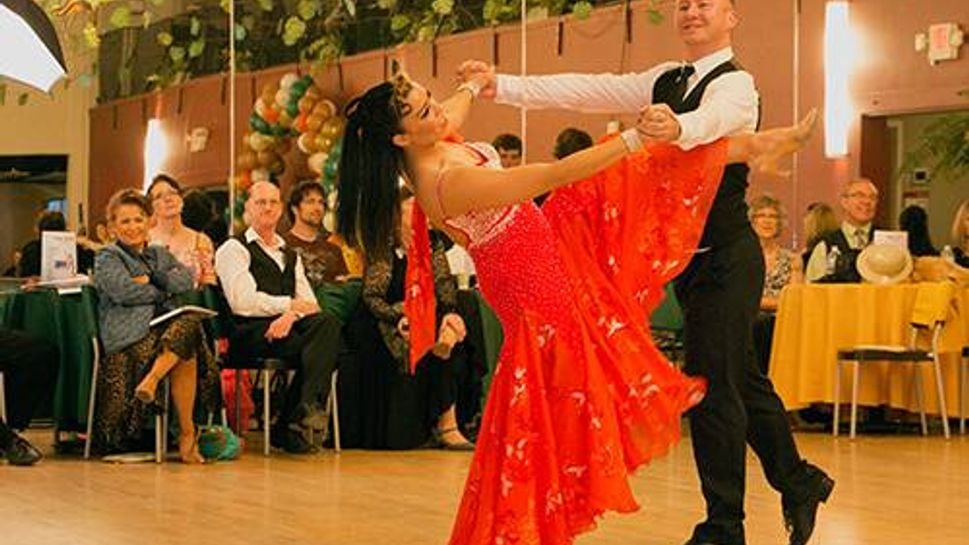

Head Over Heels
But I kept going. I took those extra lessons, and went to the studio on my own time to practice even more. It was two steps forward, one trip back, over and over, until the big show. The theme for the event was “safari,” so I bought a cheetah-print vest and matching bow tie. I dutifully bought two tux shirts because I was certain to sweat through at least one. I toned down the gray in my hair and got it cut.
Nicole and I were called out first as the show opened. My performance was far from perfect, but it didn’t matter. I got out there and I danced. Nicole and a number of others said I did surprisingly well for my first recital. Regardless of how I looked, I had more fun than I deserved.
Eric Hudson, the studio’s owner, made a few remarks about midway through. He said when he and his wife, Michelle, opened the studio 10 years ago, they had three goals: Set up a beautiful space for dancing, hire the best instructors they could find and build a community. He said he thinks they accomplished those goals but realized that they got things backwards.
Community is by far the most important, he said.
I realized then why it feels so good to keep going to classes. My fellow students are young, old, tall, short, fat and thin. Some move like wisps, others like tanks. The instructors guide each of us from one step to the next until we can move together as one.
It saddens me that I missed this connection with my late wife. I took her for granted. But the music is still playing, and I’m determined not to make that mistake again. I’m still seeing the woman whose lithe movements on the dance floor prompted me to take lessons.
“You’re in the dance community now,” she said.

